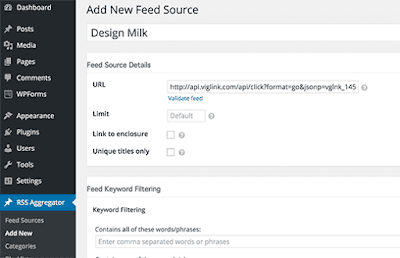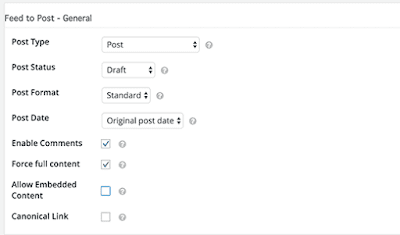Creating Autoblog in WordPress
What is an Autoblog in WordPress?
Autoblog or an automated blog is a website that automatically pulls content from other websites using RSS feeds.Mainly the term is associated with content-scrapers and spam blogs. However, there are many perfectly good and profitable usage scenarios for autoblogging tools.
For example, an autoblog can be used to create a curated website that gathers news on specific topics and then presents them under one roof. An autoblog can also be used on company intranets and private websites.
Having said that, let’s take a look at how to create an autoblog in WordPress.
Creating an Autoblog in WordPress
First thing you need to do is install and activate WP RSS Aggregator plugin. For more details, see our step by step guide on how to install a WordPress plugin.The basic plugin is free, but for this tutorial you will need paid addons in the Advanced Feeds Bundle.
The pricing starts from $139 for a single site license with one year of support and updates.
Once you have installed and activated all the addons,
simply visit RSS Aggregator » Add New to add a new feed source.
Adding a feed source
First you need to provide this feed source a title, and then provide the RSS feed URL.
Next you need to scroll down a little to the ‘Feed to Post’ section. Here you need to select a post type for imported feed items.
Feed to post
By default, the plugin will import posts as draft. If you want, then you can change that to published.
Don’t forget to check the box next to ‘Force full content’ option. Using this option, will allow WP RSS Aggregator to fetch full text of posts.
Next, you need to set up ‘Feed to post – images’ section. This is where you set up how your autoblog will handle images.
Feed to post images
It can automatically import images from feed sources and store them in your WordPress media library. It can also fetch the first image in the content and use it as featured image. You need to set up these options to match your own needs.

The add new feed source page has many other options. You can review them and adjust them to meet your own needs.
You can use keyword filtering to import or exclude content matching certain keywords or tags. You can also add custom content before or after the source article.
Click on the Publish Feed button when you are done.
You can now visit your posts section, and you will see feed items imported into your WordPress site.
Repeat the process to add more feed sources if you need. You can check the status of your feeds by visiting RSS Aggregator » Feed Sources.
Autoblog feeds
Quickly Adding Multiple Feed Sources For Your Autoblog
Adding each feed source, and configuring them one by one can be a tedious task. Here is how you can quickly add multiple feeds at once using the same settings.
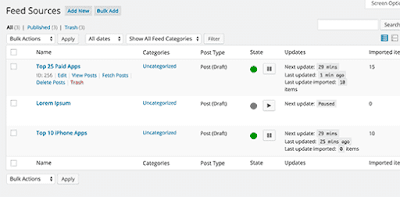
Go to RSS Aggregator » Settings and click on Feed to Post tab. Here you can configure the default settings for the feed to post addon.
These settings will be applied to all the feed sources that you add in the next step.
Feed to post settings
Next, you need to visit RSS Aggregator » Import & Export. Under the import box, you need to add name and URL of your feed sources.
A separate name and feed URL with a comma and space. Add one feed source per line.
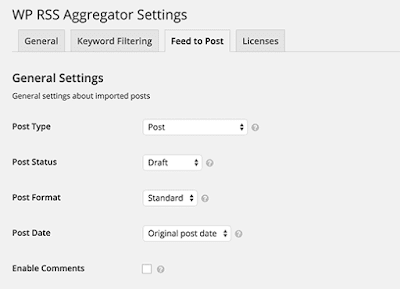
Bulk importing content from multiple feeds
After that click on bulk import button to quickly add all the feed sources to your WordPress auto blog.
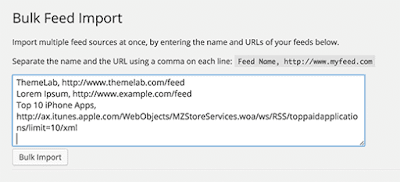
That’s all, we hope this article helped you create an Autoblog in WordPress.
Editor’s Note: Word of Warning
If you’re creating an autoblog that’s public, please do not scrape full content or images because you will be subject to copyright infringement.The best use of an autoblog is either when it’s used inside a company intranet. If you’re creating a curated news site, then pull in summaries and link to original source for full article.


